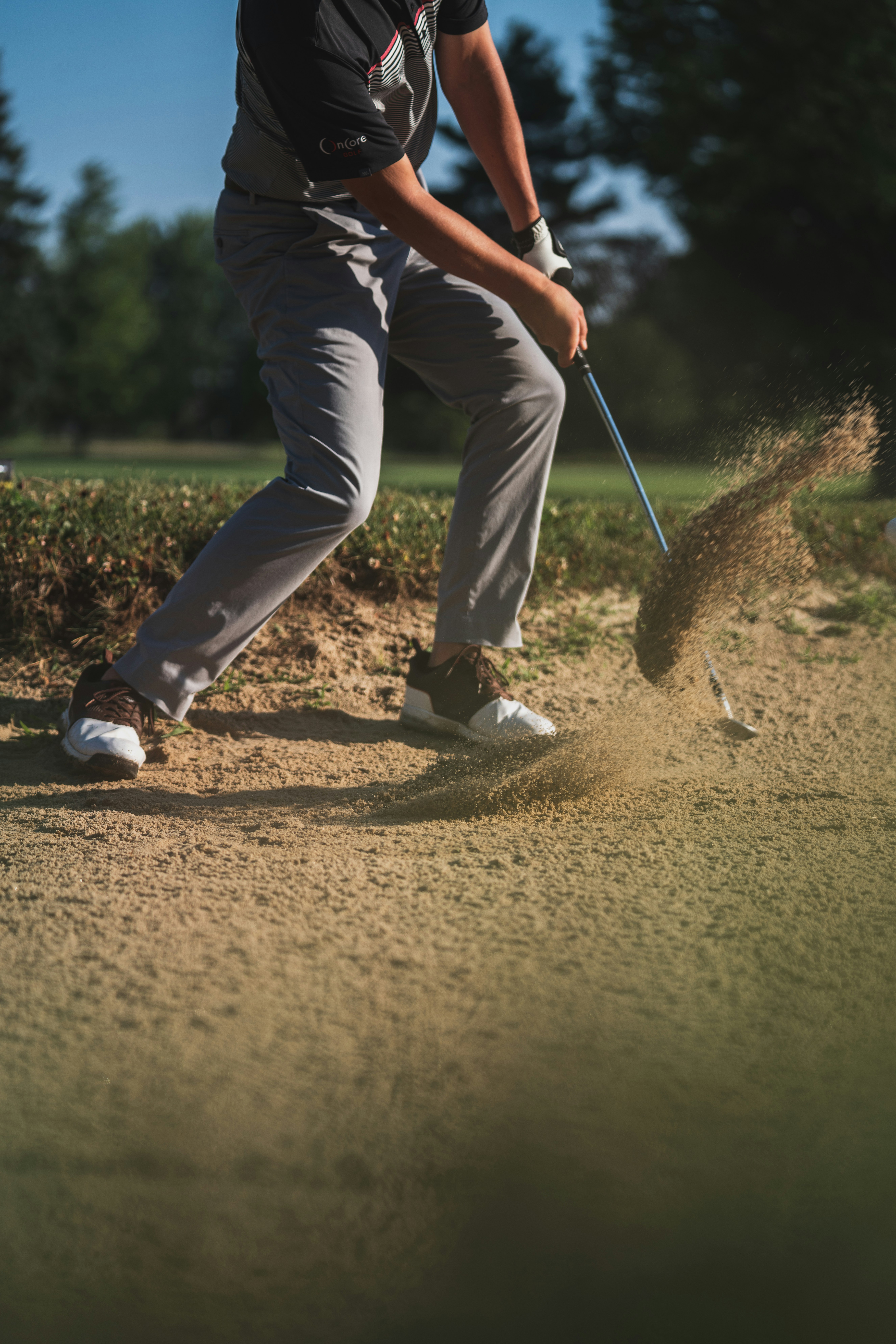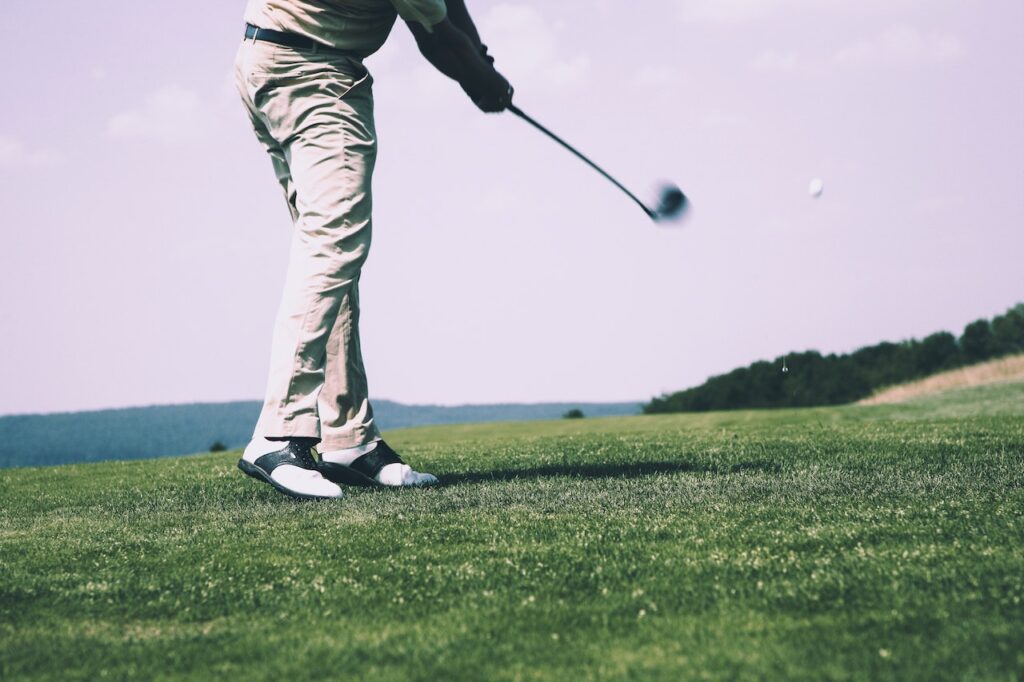Importance of a Golf Puttern the verdant green grass of a golf course as you prepare to take your swing. The most essential tool in your possession at that instant is your reliable golf putter. But have you ever questioned the durability of this essential piece of equipment? Today, we will conduct a fascinating investigation into the average longevity of a golf putter. From its construction to its durability, we will reveal the inner workings of this essential club and determine how long it will last to help you sink that ideal putt.
The average lifespan of a golf putter is 15 to 20 years. However, there are many factors that can affect the lifespan of a putter, such as the materials it is made of, how often it is used, and how well it is cared for.
The Importance of a Golf Putter in the Game
Golf is a game that requires precision and control, and one of the most essential clubs in a golfer’s bag is the putter. The putter is used on the green to make short-range shots, and its primary goal is to gently tap the ball into the hole. While other clubs like drivers and irons are necessary for long shots, it is the precision of the putter that determines whether you sink the ball or not. Thus, understanding the role of a putter in golf and how it can affect your game is crucial for any golfer.
The Role of a Putter in Golf
The putter is the club that is specifically designed for putting, which is the final part of the game where you attempt to roll the ball into the hole on the green. It is a crucial tool for golfers as it requires a delicate touch and precise control to accurately judge the speed and line of the putt. Unlike other clubs, the putter has a flat face with a low loft angle to keep the ball rolling smoothly along the grass without lifting it into the air. Without a proper putter, your ability to make accurate putts can be severely compromised, impacting your overall score.
Different Types of Golf Putters
There are various types of putters available in the market, each with its unique design and characteristics. Understanding the differences between these putters can help you make an informed decision based on your preferences and playstyle. Here are some common types of golf putters:
Blade Putters
Blade putters are the classic design of putters, featuring a straight and narrow clubhead with a blade-like appearance. They usually have a smaller sweet spot, which can demand more precision from the golfer. Blade putters are known for their sleek and traditional look, favored by golfers who prefer a traditional style and enjoy a softer feel for their putts.
Mallet Putters
Mallet putters have a larger and more rounded clubhead compared to blade putters. This design distributes weight to the perimeter of the clubhead, resulting in increased forgiveness and stability. Mallet putters are often favored by golfers who struggle with alignment or require a larger sweet spot to achieve consistent putts.
Insert Putters
Insert putters are designed with an insert in the clubface, typically made of materials like soft polymer or metal. The insert helps provide a softer feel on impact and can also enhance the roll of the ball. Golfers who prefer a more controlled, muted sensation upon impact often opt for insert putters.
Counterbalanced Putters
Counterbalanced putters have additional weight in the grip or head, shifting the club’s balance point higher up the shaft. This design aims to create a more stable and smooth putting stroke, reducing unwanted wrist action. Counterbalanced putters are popular among golfers seeking improved consistency and stability in their putting stroke.
Toe-weighted Putters
Toe-weighted putters have more weight toward the toe of the clubhead, which helps promote stability and forgiveness on off-center hits. This design is beneficial for golfers who tend to miss the center of the clubface and want to minimize the negative effects of mishits.
Understanding the different types of putters and their benefits can help you choose the one that aligns with your style, comfort, and preferences on the green.
Factors Affecting the Lifespan of a Golf Putter
Like any piece of equipment, golf putters have a certain lifespan based on various factors that influence their durability. Understanding these factors can help you take appropriate measures to extend the lifespan of your putter and ensure its optimal performance. Here are some significant factors that affect the lifespan of a golf putter:
Quality of Materials Used
One of the most critical factors influencing a putter’s lifespan is the quality of materials used in its construction. Higher-quality materials tend to be more durable and can withstand the rigors of frequent use. Putters made from materials such as stainless steel, carbon steel, or high-density alloy are typically more robust and resistant to wear and tear compared to those made from lower-quality materials.
Frequency of Use
The frequency with which you use your putter has a direct impact on its lifespan. Putters that are used more frequently are subjected to greater stress and wear. Golfers who play regularly or engage in intense practice sessions may find their putters wearing out sooner than occasional or recreational golfers. While frequency of use may vary from golfer to golfer, it is important to consider the impact of usage on the overall lifespan of your putter.
Maintenance and Care
Proper maintenance and care play a significant role in prolonging the lifespan of a golf putter. Regularly cleaning the putter after each use, removing debris, and dirt from the clubhead, and drying it thoroughly can help prevent rust and other forms of damage. Additionally, storing the putter in a suitable environment, free from extreme temperatures or humidity, can also contribute to its longevity. Applying a thin layer of oil or protective coating to the clubhead can further protect it from scratches and corrosion.
By considering these factors and taking appropriate measures, you can enhance the lifespan of your golf putter and ensure its consistent performance on the course.
Signs of Wear and Tear on a Golf Putter
Over time, a golf putter may show signs of wear and tear due to the frequent impact with the ball and the ground. Recognizing these signs can help you determine when it’s time to consider replacing your putter or taking corrective action. Here are some common signs of wear and tear on a golf putter:
Deterioration of Grip
The grip of a putter is subject to constant contact with your hands, which can cause it to wear out over time. Signs of a deteriorating grip may include loss of tackiness, cracks, or visible wear patterns. A worn-out grip can affect your ability to maintain a secure hold on the club, potentially resulting in a compromised putting stroke and reduced accuracy. Regularly inspecting and replacing worn grips is essential for optimal performance.
Scratches, Dents, and Blemishes
Golf putters can develop surface scratches, dents, and blemishes with regular use. These imperfections may not directly impact the performance of the putter but can affect its aesthetics. While minor surface damage is generally not a cause for concern, substantial dents or blemishes may affect the club’s weight distribution and balance, potentially altering the feel and performance of your putting stroke.
Loose or Damaged Hosel
The hosel is the part of the putter that connects the clubhead to the shaft. It plays a critical role in maintaining the club’s stability and alignment during the putting stroke. Excessive or repetitive impact can cause the hosel to become loose or damaged, affecting the club’s performance. If you notice any wobbling or unusual movement of the hosel, it may be an indication of wear and tear that needs attention.
Uneven Face or Insert Wear
The clubface of a putter is essential for achieving a smooth roll and consistent distance control. Over time, the clubface may develop uneven wear patterns, such as indentations or worn insert material. These irregularities can interfere with the ball’s contact on the putter face, resulting in inconsistent roll or misalignment. Regularly inspecting the face and removing any debris or dirt can help maintain its performance.
By being vigilant and identifying these signs of wear and tear, you can take appropriate action to repair or replace your golf putter to maintain consistent performance on the green.
Average Lifespan of Different Golf Putter Types
Understanding the average lifespan of different types of golf putters can provide insights into their durability and longevity. While the actual lifespan may vary depending on usage, maintenance, and other factors, knowing the general tendencies can help you make informed decisions about the replacement or upgrade of your putter. Here is a breakdown of the average lifespan for different golf putter types:
Blade Putters
Blade putters, with their simple and traditional design, often have a longer lifespan compared to other putter types. With proper care and maintenance, a blade putter can last anywhere between 5 to 10 years or even longer. The durability of blade putters is often attributed to their solid construction and fewer movable parts.
Mallet Putters
Mallet putters, which have a larger and more complex design, can offer a slightly shorter lifespan compared to blade putters. On average, a well-maintained mallet putter can last between 3 to 8 years. The lifespan may be influenced by factors such as the complexity of the clubhead design, the materials used, and the frequency of use.
Insert Putters
The average lifespan of insert putters varies depending on the type of insert material used. Putters with softer polymer inserts tend to have a shorter lifespan, ranging from 2 to 6 years. On the other hand, metal inserts or inserts made from more durable materials may last between 4 to 8 years. Regular inspection and cleaning of the insert can help maintain its performance and extend its lifespan.
Counterbalanced Putters
Counterbalanced putters, with their unique weight distribution, can offer a relatively long lifespan. When properly cared for, a counterbalanced putter can last between 4 to 9 years. Regular checks for loose components and proper storage are essential for maintaining the stability and functionality of a counterbalanced putter.
Toe-weighted Putters
Toe-weighted putters, which are designed for forgiveness and stability, typically have a lifespan similar to blade putters. With proper care, toe-weighted putters can last between 5 to 10 years. Regular inspection for hosel integrity and any signs of wear and tear is crucial for maximizing the lifespan of a toe-weighted putter.
While these average lifespans serve as a guide, it is important to note that individual experiences may vary based on factors such as usage, maintenance, and personal preferences.
How to Prolong the Lifespan of a Golf Putter
Taking proactive measures to protect and maintain your golf putter can significantly extend its lifespan and ensure its optimal performance. Here are some effective strategies to prolong the lifespan of your golf putter:
Choose a High-Quality Putter
Investing in a high-quality putter from a reputable brand can set the foundation for an extended lifespan. A well-constructed putter with durable materials is more likely to withstand the rigors of regular use and offer consistent performance. Research and consider customer reviews and expert opinions before making a purchase to ensure you’re getting a putter that meets your quality expectations.
Clean the Putter After Each Use
Cleaning your putter after each round or practice session is essential to remove dirt, debris, and moisture. Wipe the clubhead with a soft cloth, paying attention to the face, grooves, and hosel area. Use a mild soap solution or golf club cleaning solution if necessary. Avoid harsh chemicals or abrasive materials that may damage the club’s finish. Proper cleaning helps prevent rust and corrosion, preserving the putter’s integrity.

Protect the Putter Head with a Cover
Using a putter head cover provides additional protection against scratches, dents, and other forms of damage during transportation or storage. A head cover helps shield the clubhead from accidental impacts and exposure to harsh elements. Always make sure to securely fasten the head cover to avoid it slipping off or causing unnecessary movement of the club during transit.
Replace Worn Grips
Regularly inspecting the grip of your putter is crucial for maintaining a comfortable and secure hold. If you notice signs of deterioration such as loss of tackiness or visible wear patterns, it may be time to replace the grip. Worn grips not only compromise your control and feel of the putter but can also affect your overall putting performance. Consult a professional club fitter or golf retailer to ensure you select the right grip size and material for your specific needs.
Store the Putter Properly
When not in use, storing the putter in a suitable environment is essential for its longevity. Avoid leaving the putter exposed to extreme temperatures, excessive humidity, or direct sunlight, as these conditions can damage its components and affect its performance. Utilize a golf bag with separate putter compartments or invest in a putter tube or sleeve for additional protection. Always make sure the putter is dry before storing it to prevent moisture-related issues.
By incorporating these practices into your golfing routine, you can significantly prolong the lifespan of your golf putter, ensuring its longevity and consistent performance on the greens.
When to Replace a Golf Putter
Determining when to replace your golf putter depends on a variety of factors, including personal preference and the physical condition of the club. While some golfers may choose to replace their putters frequently, others may use them for many years before considering a replacement. Here are some factors to consider when deciding whether it’s time to replace your golf putter:
The Role of Personal Preference
Your personal preferences play a significant role in the decision to replace your golf putter. As your skills, playstyle, or needs evolve, you may find that a different type or design of putter suits you better. If you are consistently dissatisfied with your putting performance or feel that your current putter is not providing the desired results, it may be worth exploring other options and considering a replacement.

Physical Signs of Deterioration
Inspecting your putter for physical signs of wear and tear is crucial in determining whether it needs replacing. Excessive scratches, dents, or blemishes that affect the club’s integrity, alignment, or balance can negatively impact your putting stroke. Additionally, if you notice a loose hosel, worn insert, or any other structural damage, it may be time to consider a replacement. Trust your judgment and consult with a professional club fitter if you’re uncertain about the extent of the damage.
Impact on Putting Performance
The ultimate factor in deciding when to replace your golf putter is its impact on your putting performance. If you consistently struggle with alignment, distance control, or accuracy despite adequate practice and proper technique, it may be an indication that your putter is not suited to your needs. Experimenting with different putters or seeking professional advice can help you identify whether your current putter is impeding your progress and whether a replacement is warranted.
By taking into account your personal preferences, assessing the physical condition of the putter, and evaluating its impact on your putting performance, you can make an informed decision about when to replace your golf putter.
Where to Buy a Golf Putter
When it comes to purchasing a golf putter, there are several options available to ensure you find the right club to suit your needs and preferences. Here are some primary avenues where you can buy a golf putter:
Local Golf Stores
Local golf stores provide an excellent opportunity to examine and test various putters before making a purchase. You can receive hands-on assistance from knowledgeable staff members who can provide recommendations based on your playing style and preferences. Additionally, local golf stores often offer custom club fitting services, ensuring that you find a putter that suits your specific needs and preferences.
Online Retailers
Online retailers provide convenience and a wide selection of golf putters at various price points. You can explore different makes and models, read customer reviews, and compare prices from the comfort of your own home. However, since you cannot physically test the putter before purchasing, it is essential to research thoroughly, consult customer reviews, and familiarize yourself with the retailer’s return policy.
Golf Equipment Manufacturers
Directly purchasing from golf equipment manufacturers is another option for buying a golf putter. Many manufacturers have online stores or authorized retail partners where you can purchase their products. Buying from the manufacturer ensures genuine products and access to the latest releases and technology advancements. Additionally, some manufacturers offer custom options, allowing you to personalize your putter to your unique specifications.
Consider your personal preferences, budget, and access to physical stores when deciding where to buy your golf putter. Whether you choose a local store, online retailer, or directly from the manufacturer, ensuring a reputable seller is key to a positive buying experience.
The Cost of a Golf Putter
The cost of a golf putter can vary significantly based on various factors, including brand, materials used, and features offered. Here are some points to consider regarding the cost of a golf putter:
Range of Prices
Golf putters are available at a wide variety of pricing points, making it possible to accommodate a variety of preferences and budgets. Putter prices for recreational golfers or novices generally range from $50 to $150, making entry-level or budget putters a choice that is beneficial from a financial perspective. Depending on the model, the price of a mid-range putter can range anywhere from $150 to $300.
These putters provide dedicated golfers with an optimal combination of performance and affordability. Putters considered premium or high-end often cost more than $300 and are equipped with cutting-edge technology, superior materials, and customizable choices for use by serious golfers or pros.
Factors Influencing Price
The price of a golf putter is influenced by various factors, including brand reputation, materials used in construction, and innovative features. Well-established brands with a strong reputation for quality and performance tend to command higher prices. Putters made from premium materials such as stainless steel, carbon steel, or exotic alloys generally carry a higher price tag due to their durability and craftsmanship. Putters incorporating advanced features such as personalized fit options or innovative face inserts also contribute to a higher price point.
Cost Comparison with Other Golf Equipment
Compared to other golf clubs, putters are often one of the more affordable options. Drivers, woods, and irons typically have a wider range of prices, with high-end models easily exceeding $600. From a cost perspective, it is important to consider the role of a putter in your game and its impact on your overall score. While investing in a quality putter is crucial for improving your game, it is possible to find a suitable putter at various price points without breaking the bank.
When considering the cost of a golf putter, it is essential to strike a balance between your budget and your desired performance level. Researching different options, seeking advice from professionals, and prioritizing your needs can help you make an informed decision and find a putter that offers the best value for your money.
The Environmental Impact of Golf Putters

As with any industry, the manufacturing and use of golf putters have environmental implications. Recognizing the environmental impact and supporting sustainable practices is crucial for ensuring the future of the game. Here are some aspects related to the environmental impact of golf putters:
Sustainable Manufacturing Practices
Many golf equipment manufacturers have started implementing sustainable manufacturing practices to minimize their environmental footprint. These practices include the use of renewable energy sources, the reduction of waste and carbon emissions, and responsible sourcing of materials. Supporting manufacturers that prioritize sustainability and environmental stewardship can contribute to a greener golf industry.
Materials Used in Putter Production
The materials used in the production of golf putters can have varying degrees of environmental impact. Opting for putters made from recycled or repurposed materials can help reduce waste and limit the extraction of finite resources. Additionally, selecting putters made from eco-friendly materials, such as bamboo or responsibly sourced wooden components, can reduce the overall environmental impact associated with their production.
Recycling and Disposal Options
When it comes to the end of a putter’s lifespan, it is important to consider recycling and disposal options to minimize the environmental impact. Check with your local recycling facilities to determine if they accept golf club components for recycling. Some manufacturers may also have take-back programs or recycling initiatives in place to properly handle and repurpose old or broken putters. Proper disposal and recycling ensure that the materials used in putters have a chance at a second life and contribute to a more sustainable future.
By supporting manufacturers and practices that prioritize sustainability, using recycled or eco-friendly materials, and responsibly disposing of old putters, we can collectively contribute to reducing the environmental impact of golf putters.
Conclusion- Average Lifespan of a Golf Putter
Golfers who want to develop must understand the putter’s function in the game. Quality, design, and maintenance can extend the putter’s lifespan and performance. Maintaining an excellent putting experience requires recognizing wear and tear and knowing when to replace your putter.
Choose the correct blade, mallet, insert, counterbalanced, or toe-weighted putter for your preferences and playstyle. Cleaning the putter after each use, covering the head, and replacing worn grips helps extend its longevity. Proper storage and a good putter from recognized suppliers can increase its durability.
Based on brand, materials, and features, golf putters can cost a lot. Finding the greatest putter for your money requires considering your budget and demands. Recognizing the environmental effect of golf putters and promoting sustainable practises can help the sport become greener.
In conclusion, understanding a golf putter’s lifespan, maintenance, and influence on your game helps you make better decisions and enjoy your game more.

I’m Donna Weiss, and I am the proud writer behind the captivating content you’ll find on golfneedy.com. As an avid golfer and passionate writer, I have combined my two greatest passions to bring you an incredible golfing experience. Through my articles, I aim to provide you with valuable insights, equipment reviews, and updates on the latest tournaments. Whether you’re a seasoned golfer or just starting out on this exciting journey, I am here to guide you and share my expertise. Together, let’s explore the fascinating world of golf, uncovering new techniques, and enhancing our skills. Join me on this thrilling adventure as we elevate our game and embark on an exciting golfing journey. Read More






